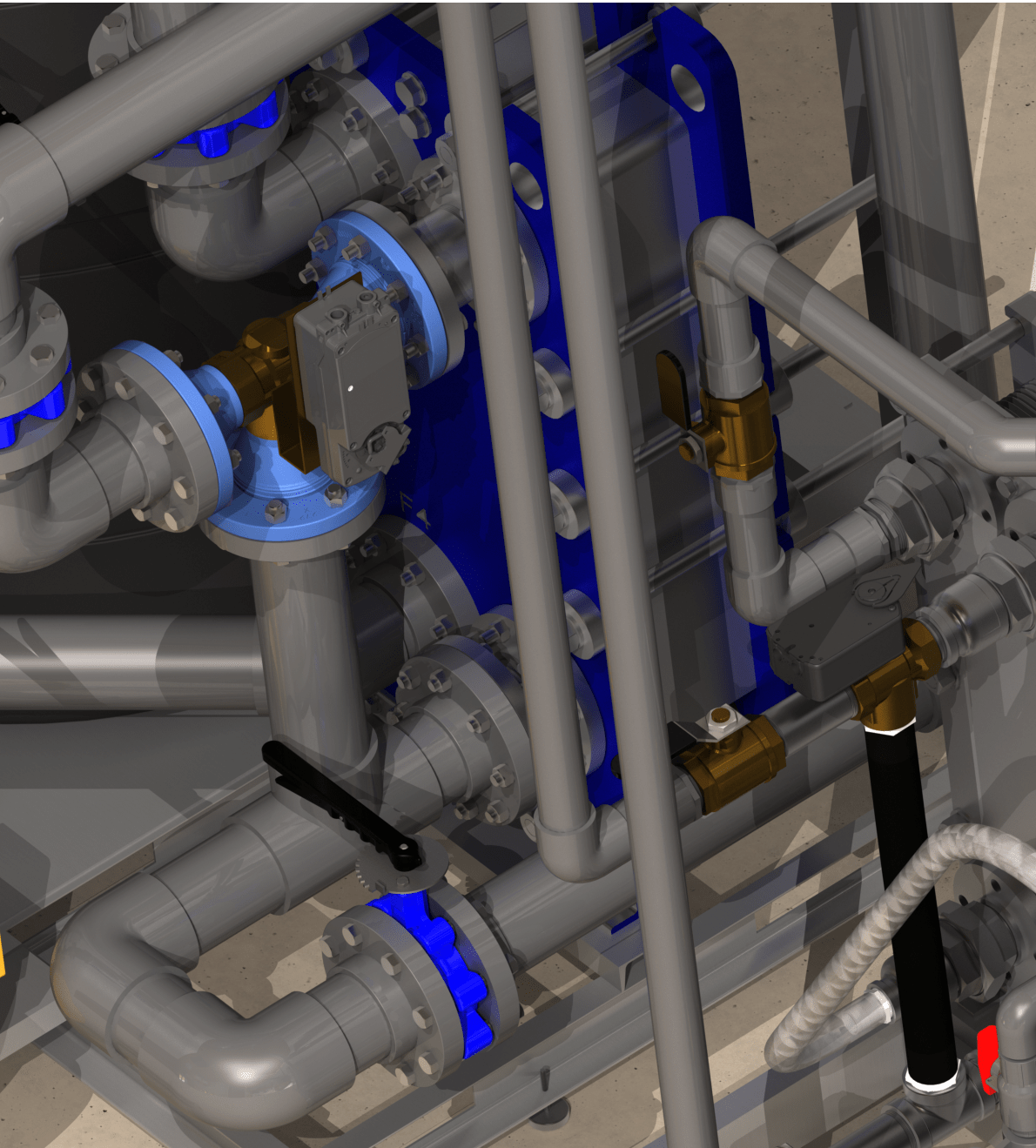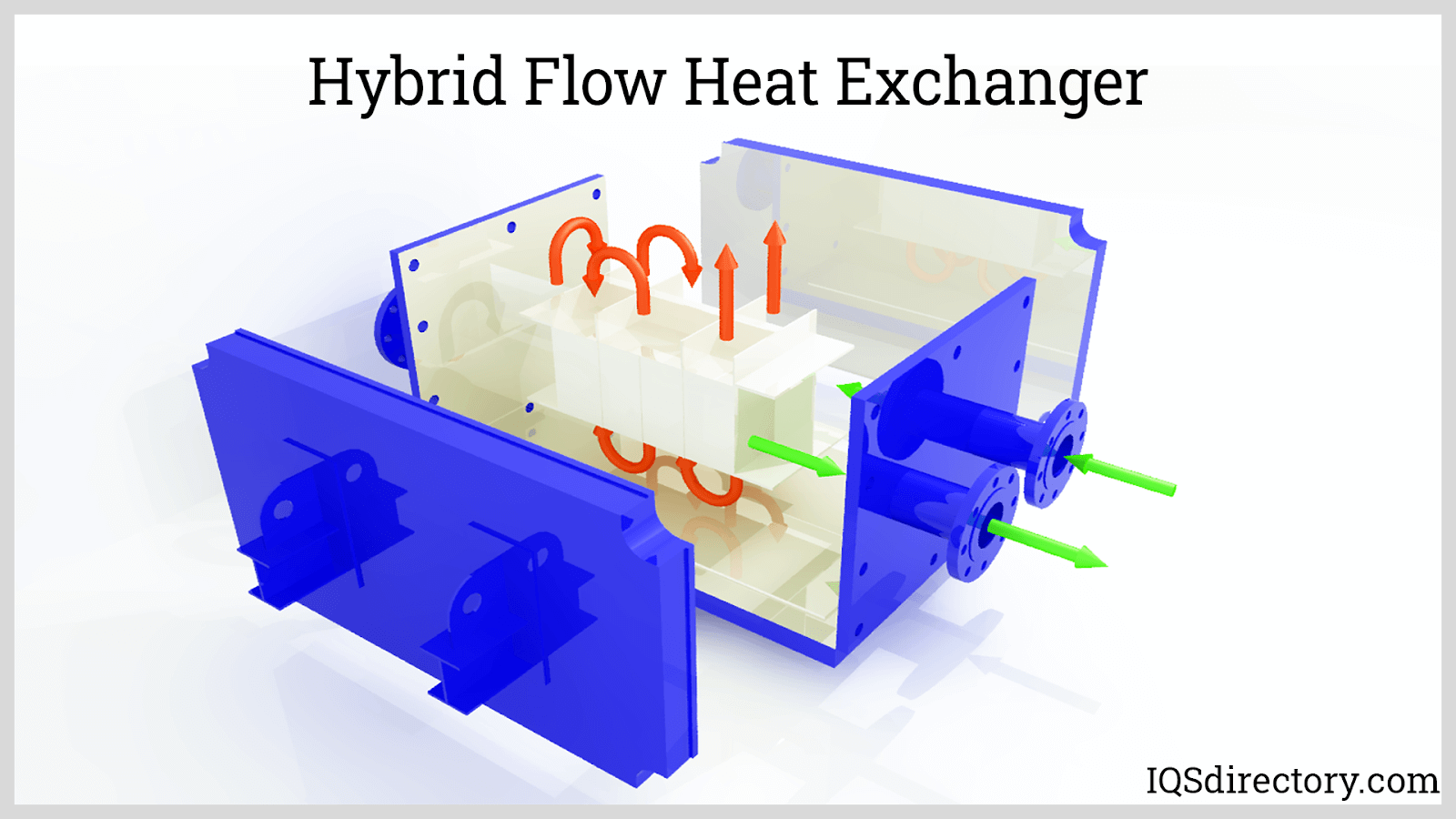Can DVS Heat Transfer Systems Help You Meet Environmental Compliance Standards?
Discovering the Conveniences and Applications of Heat Transfer Systems in Modern Market
Heat transfer systems play a vital duty in modern-day sector. They incorporate different systems such as radiation, transmission, and convection, each adding to effective thermal management. Industries like manufacturing and aerospace benefit substantially from these systems. As developments proceed, the combination of ingenious materials and innovations assures to boost power performance. This evolution increases important inquiries concerning the future implications for sustainability and functional costs throughout several sectors. What exists ahead in this recurring improvement?
Comprehending Heat Transfer Concepts
Heat transfer principles are fundamental to the procedure of various commercial systems. These principles encompass the devices of radiation, convection, and transmission, each playing an important duty in managing thermal energy. Comprehending transmission includes analyzing exactly how Heat relocates via solid products, while convection relate to Heat transfer in fluids, driven by fluid motion. Radiation, unique from the various other two, entails energy transfer via electromagnetic waves. The performance of Heat transfer influences system performance, energy intake, and overall performance. Effective thermal administration is vital in processes such as air conditioning, Heat, and heating recovery. By grasping these concepts, industries can enhance their procedures, reduce energy expenses, and boost equipment long life, thus adding to a more sustainable and efficient industrial landscape.
Secret Sorts Of Heat Transfer Solutions
While different industries use Heat transfer systems for diverse applications, several crucial kinds stick out as a result of their specific features and performances. One of the most usual kinds consist of radiation, conduction, and convection systems. Transmission systems transfer Heat via straight contact between products, making them effective in solid-state applications. Convection systems, on the various other hand, make use of liquid activity to move Heat, suitable for home heating or cooling down gases and liquids. Radiation systems run without a medium, depending on electromagnetic waves to transfer Heat, ideal for high-temperature environments. Each kind serves unique purposes, enabling markets to tailor their Heat transfer services based upon functional demands, energy effectiveness, and cost-effectiveness. Comprehending these systems is important for optimizing efficiency in numerous commercial settings.
Industrial Applications of Heat Transfer Technologies
The application of Heat transfer modern technologies in sector plays a necessary function in improving energy efficiency and maximizing processes. DVS Heat Transfer Systems. By executing innovative Heat exchange systems, companies can greatly lower their environmental effect while boosting total efficiency. This integration not only cultivates sustainability yet additionally aligns with contemporary regulative and customer demands for greener techniques
Energy Efficiency Improvements
As industries significantly focus on sustainability, energy effectiveness improvements in Heat transfer technologies have become essential for minimizing functional prices and ecological effect. Boosted Heat exchangers, as an example, make use of advanced materials and styles to make the most of thermal efficiency while reducing power intake. Furthermore, incorporating variable speed drives in pumping systems enables far better control of liquid flow, bring about significant power financial savings. The execution of clever sensing units and automation provides real-time monitoring, making it possible for modifications that optimize power usage. In addition, waste Heat recovery systems record excess thermal energy, converting it into functional power. These improvements not just improve energy efficiency however likewise add to an extra lasting industrial landscape by lowering greenhouse gas exhausts and supporting compliance with environmental policies.
Refine Optimization Techniques
Process optimization strategies are crucial in improving the effectiveness and efficiency of Heat transfer modern technologies in commercial applications. These strategies entail refining procedures to take full advantage of Heat transfer performance while reducing energy consumption and operational prices. Approaches such as computational liquid characteristics (CFD) modeling enable engineers to mimic and evaluate Heat transfer scenarios, identifying locations for renovation. Furthermore, real-time monitoring systems can provide important data on temperature level gradients and circulation prices, allowing changes that optimize performance. In addition, applying sophisticated control techniques, such as anticipating analytics, can improve system responsiveness to varying operational needs. By applying these optimization strategies, markets can achieve better thermal efficiency, reduced downtime, and enhanced product top quality, ultimately leading to boosted competitiveness in the industry.

Environmental Influence Reduction
While commercial Heat transfer innovations are essential for functional performance, their application also provides opportunities for substantial environmental influence reduction. By enhancing power effectiveness, these systems decrease gas usage, leading to lower greenhouse gas discharges. For example, progressed Heat exchangers can recuperate waste Heat, rerouting it to preheat inbound liquids, thereby minimizing energy demands. On top of that, the combination of Heat transfer technologies in renewable resource systems, such as solar thermal and geothermal applications, sustains the shift to lasting practices. Industries that utilize these modern technologies additionally benefit from decreased functional prices and boosted regulative conformity. In general, the critical application of Heat transfer systems not only boosts performance yet also fosters a more sustainable industrial landscape, adding to international ecological objectives.
Benefits of Reliable Heat Transfer Equipments
Reliable Heat transfer systems offer significant benefits in modern-day sector, largely via boosted power effectiveness and expense decrease. By optimizing thermal administration, these systems minimize energy waste, leading to reduced functional expenses (DVS Heat Transfer Systems). Organizations can attain higher sustainability and enhanced success.

Power Efficiency Improvements
As markets increasingly prioritize sustainability and cost-effectiveness, energy effectiveness enhancements in Heat transfer this website systems have emerged as an essential emphasis. Boosted effectiveness in these systems brings about reduced energy consumption, enabling centers to run even more sustainably. By optimizing Heat transfer techniques, industries can decrease waste Heat and achieve far better thermal monitoring, significantly reducing their ecological effect. Developments in modern technologies such as Heat exchangers and insulation products add to improved efficiency and integrity. Furthermore, executing energy-efficient Heat transfer solutions not only sustains conformity with regulatory criteria but additionally cultivates a society of advancement within companies. Inevitably, these improvements are necessary in aligning industrial operations with global power preservation objectives, paving the means for a much more sustainable future in production and processing industries.
Cost Decrease Opportunities
By enhancing Heat transfer systems, industries can reveal substantial cost reduction chances that boost their bottom line. Efficient Heat transfer minimizes power usage, leading to lower energy bills and minimizing functional expenses. In addition, improved system performance decreases the demand for maintenance and repair work, in addition saving prices gradually. Enhanced Heat transfer can additionally expand equipment life expectancy, allowing firms to postpone funding expenses on replacements. In addition, waste Heat healing systems can change excess Heat right into functional energy, additionally driving down prices. These systems not just streamline processes however likewise add to sustainability initiatives, placing business positively in an increasingly eco-conscious market. Overall, the monetary benefits of effective Heat transfer systems are significant and vital for affordable benefit.
Innovations in Heat Transfer Solutions
Exactly how can contemporary sector boost its procedures through cutting-edge Heat transfer services? By adopting innovative materials and modern technologies, industries can significantly enhance thermal effectiveness and efficiency. Technologies such as nanofluids, which boost Heat transfer capacities past traditional liquids, and stage adjustment products that save and launch thermal power, are getting grip. Furthermore, the integration of smart sensors and IoT devices enables real-time monitoring and optimization of Heat transfer processes, decreasing waste and enhancing system responsiveness. Additive production methods enable the creation of more complex Heat exchangers that make the most of surface area while lessening product use. Jointly, these technologies drive functional effectiveness and produce competitive benefits in different markets, consisting of energy, aerospace, and production.
The Function of Heat Transfer in Sustainability Initiatives
While the promote sustainability proceeds to reshape sectors, the function of Heat transfer innovations becomes progressively necessary in accomplishing environmental goals. Efficient Heat transfer systems assist in power efficiency by enhancing thermal management in numerous processes, substantially decreasing power consumption and greenhouse gas exhausts. For example, progressed Heat exchangers are used in industrial applications to redeem waste Heat, thus minimizing power waste. Furthermore, innovations such as stage adjustment materials improve thermal storage space, adding to renewable resource assimilation. Moreover, the adoption of lasting liquids in Heat transfer systems can minimize environmental effect. By prioritizing effective Heat transfer, sectors not only boost operational performance but likewise straighten with international sustainability initiatives, fostering a cleaner, much more lasting future.
Often Asked Inquiries
Just How Do Heat Transfer Systems Influence Power Costs in Manufacturing?
Heat transfer systems substantially affect power prices in production by boosting performance, minimizing waste, and enhancing thermal administration. These renovations cause decrease functional expenditures, inevitably benefiting overall performance and success in industrial procedures.
What Maintenance Is Needed for Heat Transfer Systems?
Maintenance for Heat transfer systems consists of normal inspections, cleaning of components, checking liquid degrees and problems, changing worn parts, and guaranteeing correct insulation. These activities improve effectiveness, prolong lifespan, and protect against pricey failures in procedure.
Exist Security Interest In Heat Transfer Solutions?
Safety and security worry about Heat transfer systems include possible leaks, pressure accumulation, and thermal dangers. Proper style, normal upkeep, and adherence to safety methods are necessary to mitigate these threats and guarantee secure operation in industrial settings.
Exactly How Can I Select the Right Heat Transfer System for My Business?
Selecting the right Heat transfer system entails assessing factors such as efficiency, application demands, spending plan constraints, and safety and security requirements. A thorough evaluation of these aspects will certainly help assure perfect efficiency and integrity in company operations.
What Prevail Failings in Heat Transfer Systems and Their Causes?

Understanding transmission involves assessing how Heat relocates with strong materials, while convection pertains to Heat transfer in fluids, driven by fluid movement. By optimizing Heat transfer approaches, markets can decrease waste Heat and accomplish far better thermal administration, considerably reducing their ecological impact. Waste Heat healing systems can transform excess Heat right into usable energy, additionally driving down prices. Advanced Heat exchangers are made use of in industrial applications to recover waste Heat, thereby lessening energy waste. Typical failings in Heat transfer systems consist of leaks, click this deterioration, and inefficient dig this Heat exchange.